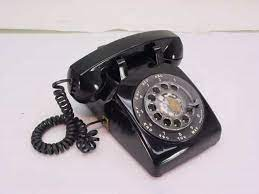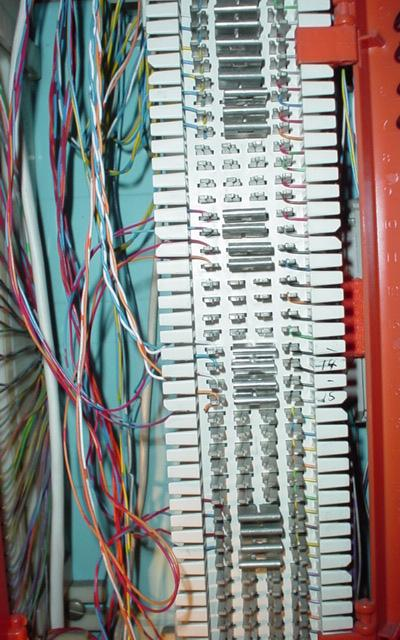What are POTS Lines (Everything You Need to Know)
POTS Lines stands for Plain Old Telephone Service which are the analog copper services that have been in every business and residential home for 100 years. It is part of the Publicly Switched Telephone Network (PSTN) which supports routing calls from the origination to destination. Over time, many features were introduced by telephone providers such as voice mail, caller id, call waiting, 911, and more. Many telecom professionals and consumers of these services also define POTS as “landlines” which provide unique slang. There is a lot of movement today around POTS replacement due to the carriers exiting the copper offering which we will discuss further. In order to replace POTS lines, you should clearly understand the history and what you have for copper handoffs today. Let’s discuss how to replace POTS lines and what they are first so you can be armed in your enterprise.
If you are old enough to remember when AT&T was the only phone provider in the United States, you may recall having one of these black rotary phones. Prior to the US Government’s breakup of AT&T, they were the only option for telephone service. Once AT&T broke apart and other ILEC and CLECs began to emerge for competitive pricing for businesses, they continued the tradition of copper analog installations.
AT&T Phone

POTS lines were much easier to install at a business because most likely the building had been pre-wired with a 66-block in the basement to support any needed lines. Additionally, power was not required to support calls as the telephone itself received the necessary signaling, so simple wiring to a desk made turnups easy.
66 Block

POTS lines have not gone away, there are still many carriers who will provide the service, usually if the building had copper service prior. The FCC has now allowed carriers to apply for relief in the traditional POTS dial-tone requirement with the advent of new technology, namely VOIP and Cellular. You can read more about FCC 19-72 here. Some proponents hail VOIP as the better alternative compared to these legacy analog lines and we would argue it all depends on the use case.
How do POTS Lines work
POTS lines have gone through a few iterations since Alexander Graham Bell began placing calls. Calls are sent out and received from the receiver, which connects to a Terminal that is routed to a Central Office (CO). Every town has at least one if not more COs and major cities could have hundreds. The Central Offices today have transformed as well to become more of mini Points of Presence (POPS) where they terminate SDWAN, Internet, Private Line, VOIP, and other services. That’s for another read & blog for a different day!
Once the call lands in a CO, there will be a quick determination if this call is local to the CO (say your neighbor’s house) or if it’s going cross-country or even global. If it stays local, most likely the CO will route the call to a Tandem office or equipment in the building and back out to a local Terminal to the end-user. If it’s out of territory state/country, then the CO must pass the call to essentially a large lookup table in the PSTN until it reaches its destination.
What is the term Circuit Switching in POTS
If you have ever watched an old black and white movie when a person picked up a telephone and asked the operator to connect them to another location, well that is essentially how circuit switching started. The operator would “plug” the connection into the receiving slot on the board to connect the call. Imagine in our world today, the lack of privacy having to speak with a live operator to place a call for us. POTS lines expand across a network topology of Circuit Switching which dedicates a transmission path even if nothing is passing over the wire. This can be very tedious and resource-intensive. It’s also much slower compared to Packet Switching which many organizations use today for their traditional data routing.
2 reasons why are POTS lines going away
The 21st century has seen many advances in technology and the sunsetting of former solutions once thought impossible to change. Faxing documents has not been around as long as the telephone however more virtual file sharing took over quickly. POTS lines are sunsetting for these basic reasons
Limited Reach:
POTS lines technically can connect anywhere in the globe, however, if you compare the tech such as VOIP it has surpassed POTS. Additionally, as more building of new office structures or even healthcare agencies, new infrastructure is required including telephone lines. With the FCC relief mentioned in this article, carriers are not obligated to install new lines into a new building. Thus, enterprises are faced with the grim reality they must use something other than a traditional analog copper POTS line; it simply will not be installed.
VOIP is cheaper:
All VOIP lines run over an existing Internet connection and can offer unlimited local and long-distance calling for enterprises. This provides a fixed monthly cost which is exactly predictable and easy to manage. If there is an issue on the VOIP network and your internet connection is working just fine, there most likely isn’t anything to troubleshoot on-site. That is a huge advantage plus with remote workers, dial plans and terminating calls can occur anywhere in the world.
You might be asking should you immediately replace your copper analog lines? The answer is no unless the carrier is moving your pricing to tariff rates or has officially given notice to turn down their copper product.
Would you like to receive a quick free assessment of your POTS lines and possible savings? Contact Us and an Engineer can review your copper environment in 15 minutes.
Happy Dialing!
Related Posts
1 Comment
Comments are closed.
Recent Posts
- AI-Powered Humanoid Robots: Transforming Business, Homes & Connectivity
- Top IT & Network Design Consultants in Boston and New England: Macronet Services
- Top AI Consultants in New England: Why New Hampshire’s Macronet Services Shines in Boston and Beyond
- IXPs in the US and Internet Peering
- Top Tips for a Winning Agentic AI Contact Center for 2025
Archives
- June 2025
- May 2025
- April 2025
- March 2025
- February 2025
- January 2025
- December 2024
- November 2024
- October 2024
- September 2024
- August 2024
- July 2024
- June 2024
- May 2024
- April 2024
- March 2024
- February 2024
- January 2024
- December 2023
- November 2023
- October 2023
- September 2023
- August 2023
- July 2023
- June 2023
- May 2023
- April 2023
- March 2023
- February 2023
- January 2023
- December 2022
- November 2022
- October 2022
- September 2022
- August 2022
- July 2022
- June 2022
- May 2022
- April 2022
- March 2022
- February 2022
- January 2022
- December 2021
- November 2021
- October 2021
- September 2021
- August 2021
- July 2021
- June 2021
- May 2021
- April 2021
- March 2021
- December 2020
- September 2020
- August 2020
- July 2020
- June 2020
Categories
- Uncategorized (1)
- Security Services (71)
- Cloud SaaS (60)
- Wide Area Network (307)
- Unified Communications (196)
- Client story (1)
- Inspiration (9)
- Tips & tricks (25)
- All (19)
- Clients (12)
- Design (3)
- News (270)
- Music (1)
- Sports (1)
- Travel (1)
- Artificial Intelligence (3)







[…] products require the installation of a gateway device that will be installed at your current 66-block and connect to a wired or wireless internet link. The gateway will then enable the POTs signal […]